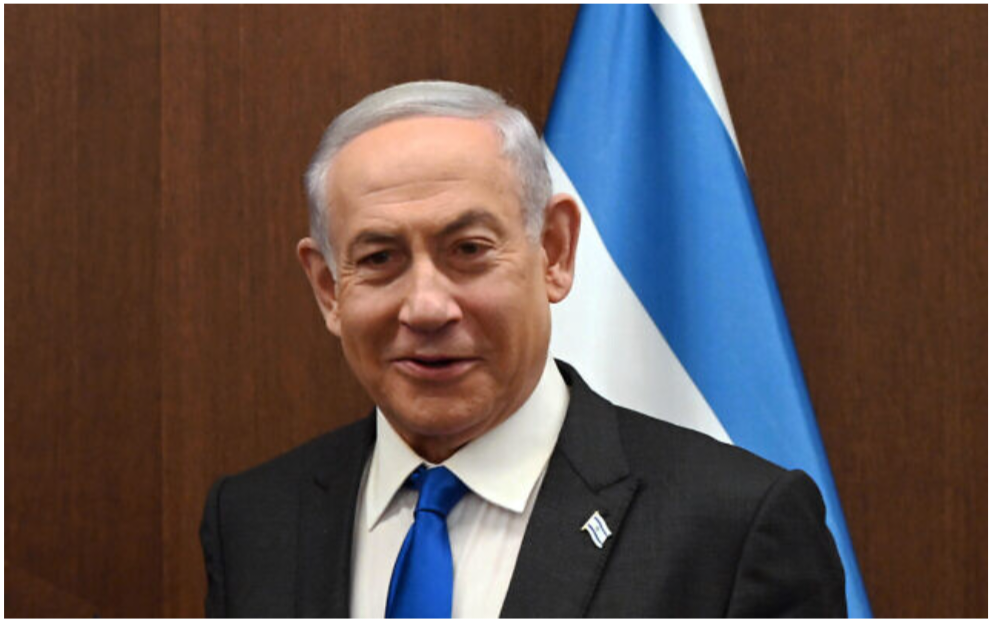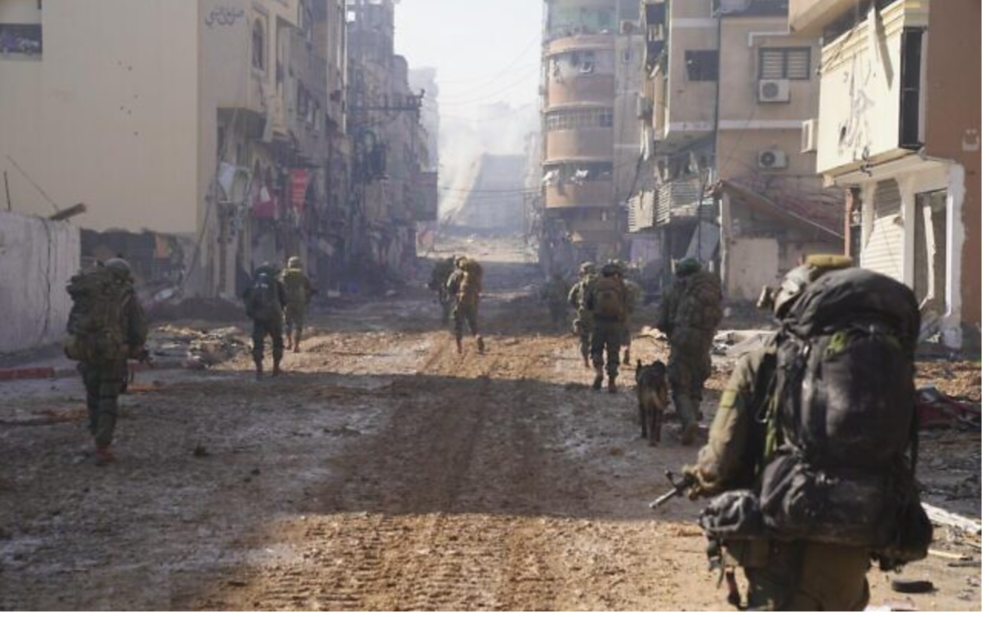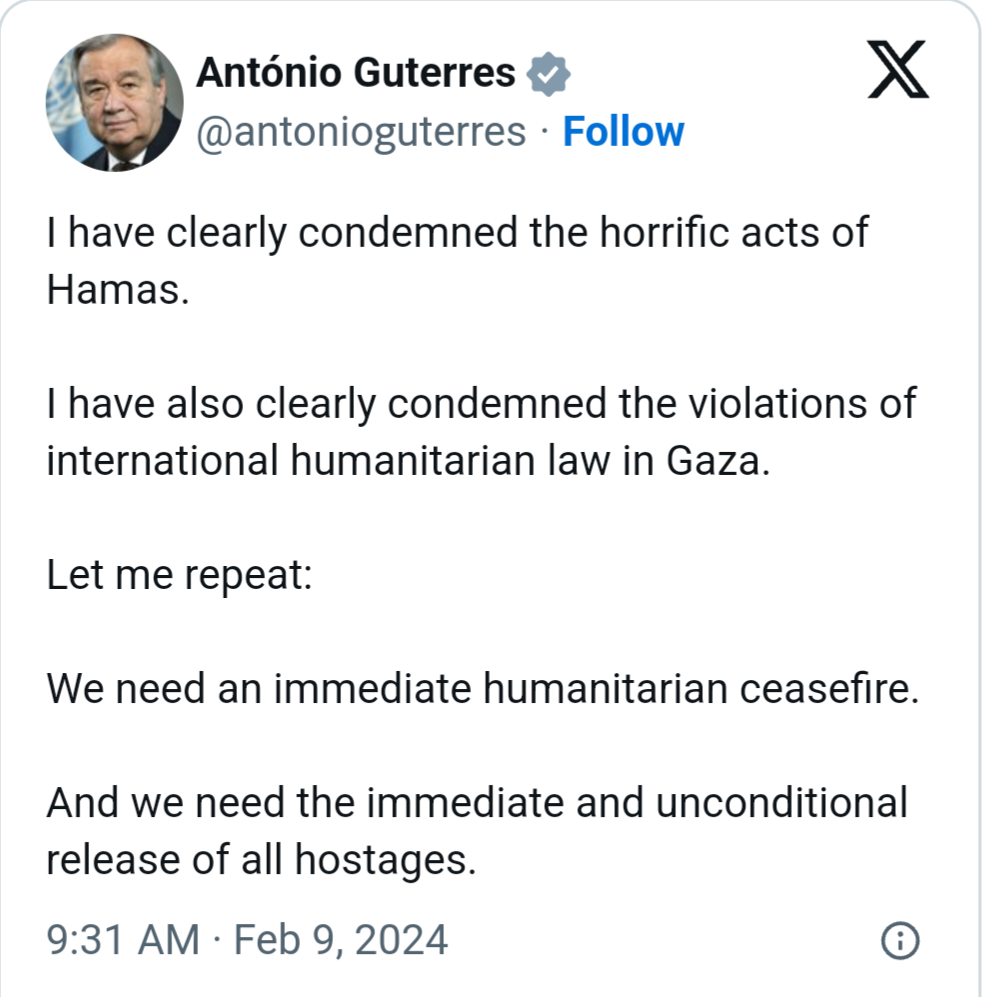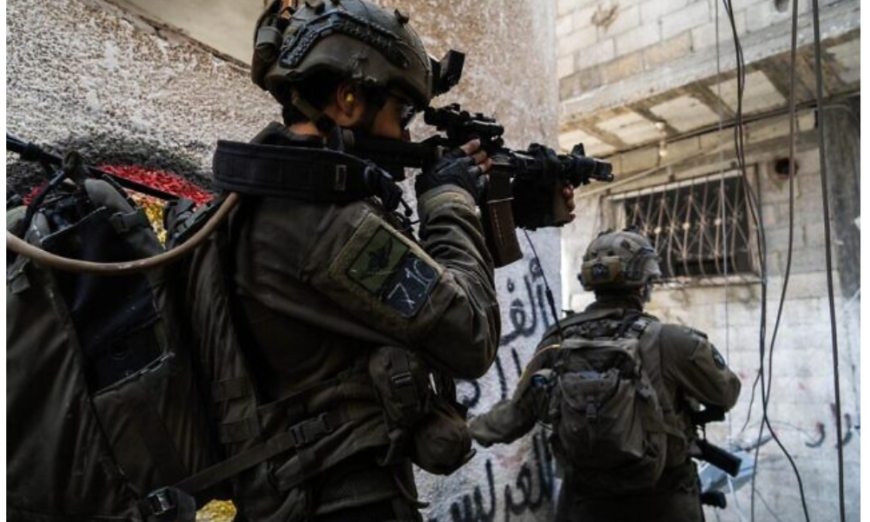IDF soldiers fighting in the Gaza Strip in a photo released by the IDF on Feb. 9, 2024. (IDF Spokesperson.)
Amid US alarm, Netanyahu says it’s ‘impossible to achieve war goal and leave 4 Hamas battalions in Rafah’; numerous gunmen killed in Gaza fighting.
Prime Minister of Israel, Benjamin Netanyahu indicated Friday that the over one million civilians who have crowded into the southern Gaza city of Rafah will be able to evacuate before the Israel Defense Forces begins operating there.
The statement came amid US statements that Israel has not conducted the pre-operational planning necessary to ensure that civilians will be kept out of harm’s way and that failure to do so risks “disaster.”
Netanyahu’s office said in a statement that he had instructed the IDF and defense establishment to present the cabinet with plans for both the evacuation of the Palestinian civilian population from the southern Gaza Strip and the dismantlement of Hamas’s battalions in the Rafah area.
“It is impossible to achieve the war goal of eliminating Hamas and leave four Hamas battalions in Rafah,” the statement said.
“On the other hand, it is clear that a massive operation in Rafah requires the evacuation of the civilian population from the combat zones,” it added.
More than 1.3 million Palestinians are estimated to be sheltering in the Rafah area, after the IDF issued evacuation warnings from northern Gaza and other areas in the Strip amid its ground offensive against Hamas. Unable to leave the tiny Palestinian territory, many are living in makeshift tent camps or overflowing UN-run shelters.
Netanyahu this week rejected a ceasefire proposal from Hamas, saying its demands were “delusional,” after the terror group proposed a truce plan that would see a four-and-a-half-month ceasefire during which hostages would be freed in three stages, and which would lead to an end to the war. The Hamas proposal would have seen Israeli troops withdraw from Gaza with the terror group still intact ruling the Strip, as well as the release of 1,500 prisoners from Israeli jails, a third of whom are serving life sentences. It made other various demands of Israel.

Prime Minister Benjamin Netanyahu at his office in Jerusalem, February 5, 2024. (Haim Zach/GPO.)
An Israeli official told The Times of Israel on Thursday that Jerusalem was working to pressure Hamas to withdraw its terms and was not about to offer new terms. “The main target now is to create pressure from the Americans and other countries on Qatar, and from there on Hamas, in addition to the military pressure, to bring them down from their delusional demands,” said the official.
US President Joe Biden said Hamas’s reply was “a little over the top.” But US Secretary of State Antony Blinken said that while some parts of the Hamas proposal were non-starters, it did create space for further negotiation.
Numerous gunmen killed by troops in Gaza
Fighting continued across the Gaza Strip Friday, with the IDF saying it carried out several airstrikes against Hamas cells attempting to attack troops.
In the southern Gaza city of Khan Younis, the IDF said the Commando Brigade operated in the western part of the city, raiding Hamas sites. An IDF drone spotted a Hamas cell placing explosive devices near the commando troops, and an aircraft struck and killed the operatives, the military said.
Also in Khan Younis, the IDF said troops of the Border Defense Corps’ 414th Combat Intelligence Collection Unit spotted two armed Hamas operatives and directed an airstrike on them.
The Paratroopers Brigade, also in western Khan Younis, killed some 15 Hamas operatives during raids on the terror group’s sites over the past day, the IDF said.
In another area of Khan Younis, the 646th Reserve Paratroopers Brigade directed airstrikes on several booby-trapped buildings, raided several Hamas sites and seized weapons and equipment.
The brigade also located a Hamas rocket launcher adjacent to a children’s daycare and a mosque. The rocket launchers, armed with projectiles and aimed at Israel, were later destroyed, the IDF said. The reservists also discovered a Hamas tunnel under a water facility in Khan Younis.

IDF soldiers advancing in the Gaza Strip in a photo released by the IDF on Feb. 9, 2024. (IDF Spokesperson.)
Israel also reportedly conducted airstrikes in the city of Rafah on Gaza’s southern border, killing at least 13 people, including two women and five children, according to a hospital that received the remains. The military did not immediately comment on those strikes.
Meanwhile, in northern Gaza’s Beit Lahiya, the Gaza Division’s Northern Brigade spotted a group of gunmen near a Hamas position, the IDF said. Airstrikes were carried out against the cell and against two other gunmen spotted in the area.
UN Secretary-General Antonio Guterres on Friday called for an immediate ceasefire in the war and the release of all hostages, condemning Hamas’s October 7 massacre and “the violations of international humanitarian law in Gaza,” in apparent reference to Israel.

War broke out following Hamas’s October 7 attack which saw some 3,000 terrorists infiltrate Israel, killing 1,200 people and taking approximately 250 hostages. It is believed that 136 hostages remain in Gaza, about 30 of whom are believed to be dead.
Israel’s ensuing military campaign on the Gaza Strip has killed over 27,000 Palestinians, according to the Hamas-run health ministry in Gaza. The casualty numbers in Gaza cannot be independently verified and are believed to include over 10,000 members of Hamas’s military wing who were killed in battle as well as Gazans killed by misfired rockets.
Sinwar ‘out of contact’.
Efforts are continuing for a truce agreement between Israel and Hamas that will see more hostages in Gaza be freed. However, the security establishment reportedly believes that Yahya Sinwar, Hamas’s leader in the Gaza Strip, has been “out of contact” for the past 10 days, not passing any messages to Qatari and Egyptian mediators during that period.
According to Channel 12, the reason for the disconnect is not clear and could be because he is on the run, engaged in a tactical ruse or simply unable to make contact due to the ongoing communications problems in Gaza.
Several decisions were made by Hamas in the past few days without him, though not necessarily ones relating to the hostages deal, Channel 12 said.
According to Kan news, the Israeli security establishment’s assessment is that Sinwar was not involved in issuing Hamas’s response to the Qatari hostage deal framework earlier this week.
The Hamas response included a clause stating that the deal would be “subject to the approval of the Hamas leadership in Gaza,” seemingly making Sinwar’s approval necessary. Reportedly, Hamas’s leadership in Qatar is seeking a permanent ceasefire in Gaza, while Sinwar would suffice with a temporary pause of six weeks so that the terror organization can regroup.

